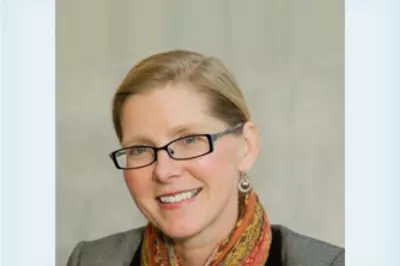Interview with Susan Frampton

As the President of Planetree, a non-profit membership organization, Susan Frampton, PhD, works with an alliance of more than 120 hospitals and health centers around the country that have implemented Planetree’s unique patient-centered model of care. Prior to her work with Planetree, she spent over twenty years at several hospitals in the New England area. Her work focused on community education, wellness and prevention, planning, and development of integrative medicine service lines. Frampton received both masters and doctoral degrees in medical anthropology from the University of Connecticut, and has numerous publications, including the edited collection “Putting Patients First” (Jossey-Bass Publishing, 2003), which won the ACHE Hamilton Book of the Year Award in 2004. She speaks widely on cultural and organizational change, patient-centered care, and health care consumerism.
Can you briefly describe your area of expertise/background?
Frampton: I’m a medical anthropologist by training, and have worked with hospitals for the last 25 years. A lot of my early work was focused on community health education, risk reduction and planning of integrative medical lines for hospitals. More recently, with Planetree, my work has been more focused on doing cultural assessments of hospital environments and developing strategic plans to enhance patient-centered practices in those centers.
What are some of the characteristics of patient-centered care or of healing environments?
Frampton: There are several foundations of good patient-centered practices, and they fall under a number of broad categories, but I often think of four critical pieces.
One is access to information, for instance, really looking at how we use every possible opportunity to both provide information to patients, as well as making the information that’s already gathered acceptable. One of the practices that we really try to encourage is an open medical record policy, where patients are actively encouraged to read their charts while they’re in the hospital environment, and for the hospitals to even consider developing a patient progress notes section right in the medical record, and invite patients to chart on themselves and their experience, as well. Another practice we encourage is to have a health resource center, either an actual patient library or a virtual patient library of good, screened health materials. Many people are turning to the internet, but there’s so much junk out there, mixed in with the really good stuff, and I think that what health care consumers need is help sorting through all of that.
The second area that patients tell us is so critical to them is the involvement of their social support systems, which is usually their family and friends, so we look at how we can really welcome family and friends in the patient’s experiences. This occurs through making sure that our facilities and policies are set up to accommodate family involvement. Most of the facilities that we work with do away with visiting hours. They do away with that paradigm because the thought is that we are here to provide service to patients and their families, understanding that patients are not isolated individual units, but they function as part of a social system, so involving family also in access to information, education and care is very important.
In addition to looking at things like visitation policies, we look at creating opportunities like a Carepartner program, where a family member could be actively involved in providing support care to a patient while he is in the hospital. Of course, being involved would be a choice the family member would make, but many families would love to be shown how to do a wound dressing change or a tube feeding for a family member who they’re going to be supporting when that person gets discharged to home.
The third area I think of as being really critical is the whole continuum around compassionate human interaction. This is a little more amorphous, because there are so many different aspects to how we support compassionate human interaction; it’s everything like the face-to-face interactions that staff have with each other and that they have with patients and families. The question is, how do we help staff to understand the needs of patients and the importance of empathizing and understanding their needs and their fears when they’re in a hospital environment, and how does the facility itself support good interactions?
And that sort of crosses over to the fourth area I’m going to mention, which is healing environments. One example of a healing environment would be when a hospital has a chance to do construction or renovation, to go from a centralized to a decentralized nursing station, so that you put nurses right outside of a cluster of patient rooms, so patients have easy access to them, versus putting them all down at the end of one hallways in a centralized station, and putting patients all the way down at the other end. There are ways that the built environment can support more compassionate, attentive care on the part of the caregivers, and also recognize the needs of staff who work in a very complex, stressful environment. Staff need their own space to decompress, whether that’s staff lounges or fitness centers, it’s important to look at their needs, as well.
What are some of the interesting things happening in this area today?
Frampton: I think the most important thing happening is the growing appreciation for the entire experience that the patient has with the environment, so that we’re not just looking at, for instance, the patient’s room, but we look at every point of contact they have with a facility. You start by looking at the parking experience, and is parking set up to be easily accessible and well-signed for patients? Is there a valet service? Again, is it well-signed? When you get there is there someone there to greet you? Is it easy to make your way to whatever your destination is? Is it warm and welcoming? Does it give people the sense that they will be well cared for?
Then looking at areas where people are admitted or registered – are their privacy needs being addressed by the way those areas are set up? Are their families needs being addressed? Have we looked at family spaces in pre-op or post-op areas and designed them in a way that a family member could be there to support the patient if they choose? Up on the floors, in the units, is there appropriate space for both patients and for family? We’re also seeing a move now, in this country, to all single rooms, because we’re finding it to be better medicine. Hospitals’ infection rates come down when you don’t have two sick patients sharing a room and the same airspace, so it’s important to look at those aspects of the healing environment, as well.
How did you get interested in healing environments?
Frampton: Really, it’s been with the move to Planetree, where it’s been a real education for me over the last 7 years. Planetree has always been an organization with an appreciation of the subtle influence, and sometimes the not so subtle influences, that the built environment has on human beings, and on how they feel and how they behave. We end up really helping hospitals evaluate their environment from the patient’s perspective, so a lot of the focus group work that we do at Planetree, with patients and with staff, does focus on the environment, and we gather their ideas about what a healing environment is, what it should look like, what it should feel like, what it should smell like, and so having done a lot of that focus group work, you can’t help but see many of the themes that come up over and over again, and about the way the environment can better support healing.
What can people do on their own to create healing environments in their own lives?
Frampton: I think most of us are fairly attentive to our home environments, so we set them up in a way that is pleasing to us, in terms of our choices of furniture – everyone wants a comfy chair or couch in the living area. We choose the firmness of a mattress based on what works for us, we choose the art that we find inspiring, we use colors that we find pleasing. In the home environment, maybe the biggest mistake that we make is using what’s most readily available or what’s cheapest to purchase. In terms of office environments, there are so many variables there in terms of how much choice we actually get in the office environment. Do we get to choose the kind of furniture we use? You would hope that most people would get ergonomically correct chairs and keyboards and all of those sorts of things, but those are all things that, throughout the day, help to create a different emotional tone.
People can start by looking at furniture, how it is configured and what it does to facilitate good human interaction. Are your colors and the décor comforting or pleasing, and are they familiar? Many patients talk about hating the sterile off-white you find in hospitals, so I think looking at things from the perspective of, if you’re sick, what is most comforting to you as a human being. Most of us would say if we’re sick, we’d want to be at home in our own cozy space, so maybe using that as a good starting point of creating a good home environment. It’s also important to tune in to things like the noise environment, there are ways of addressing noise levels. Even just using your nose; the olfactory environment, whether it’s using diffusers for essential oils, or whether it’s smelling bread, is important. People can look at those things, and at the feel of the environment from a texture, or touch perspective, as well.
What is your next professional endeavor?
Frampton: I’m not much of a planner in that sense, but it’s probably just to continue to support the growing movement of patient-centeredness, not only in this country, but around the world. There is a growing sensitivity to patient-centered environments, apart from working with a particular center, so I think just broadening out and trying to influence that movement. I think if it’s possible to influence the physical environment and create an environment that supports patient-centered care, then you can sort of get in through the back door to do some of the culture change work that is a little more difficult or challenging to do. It’s very exciting and very rewarding to work in this field.


